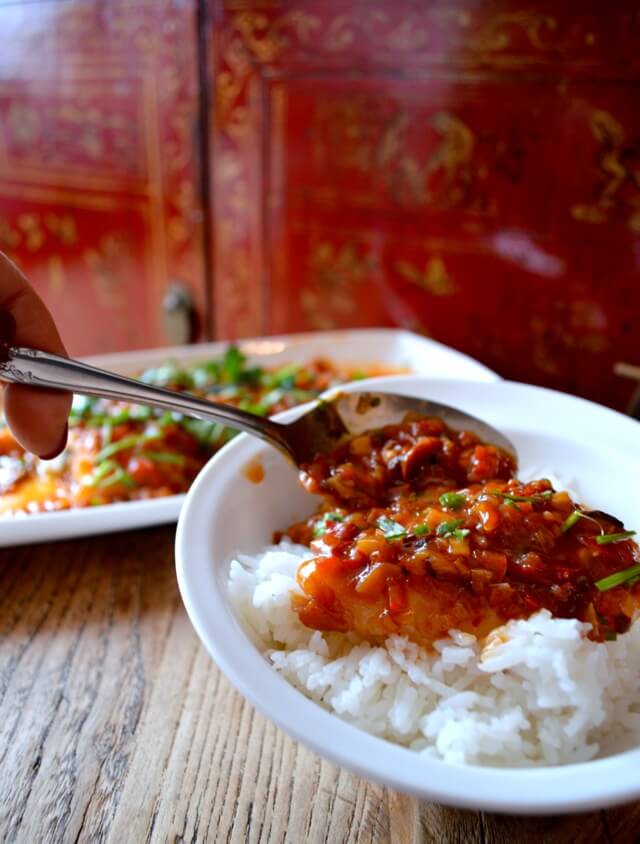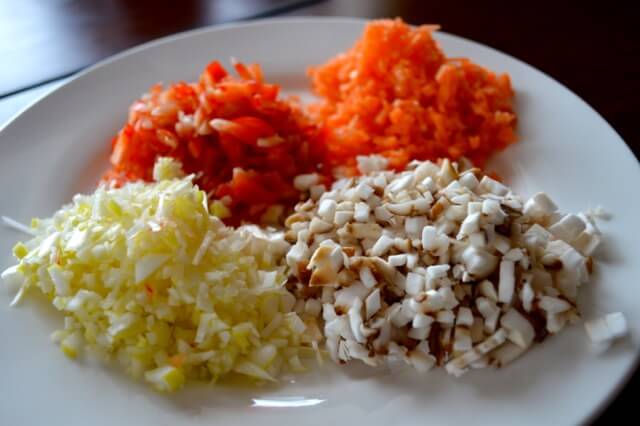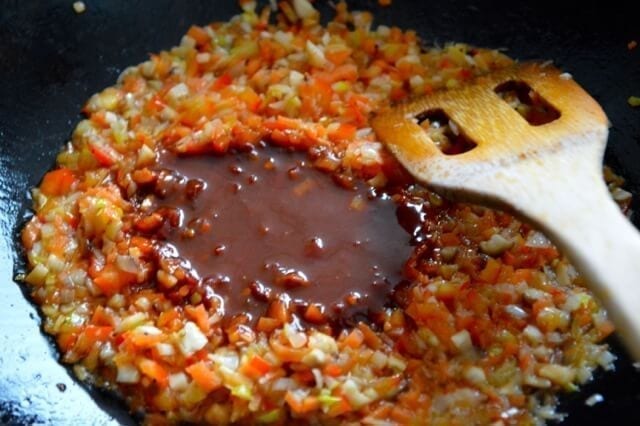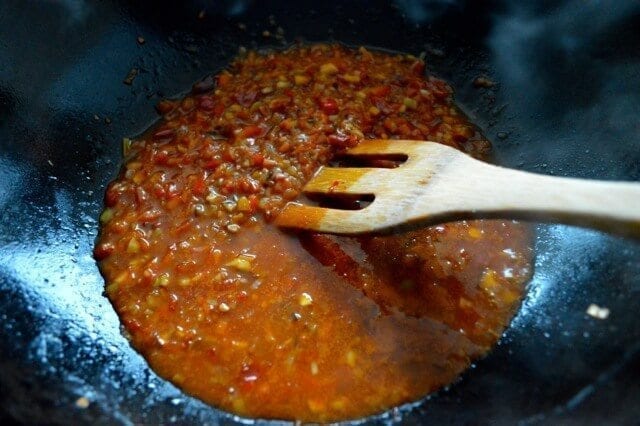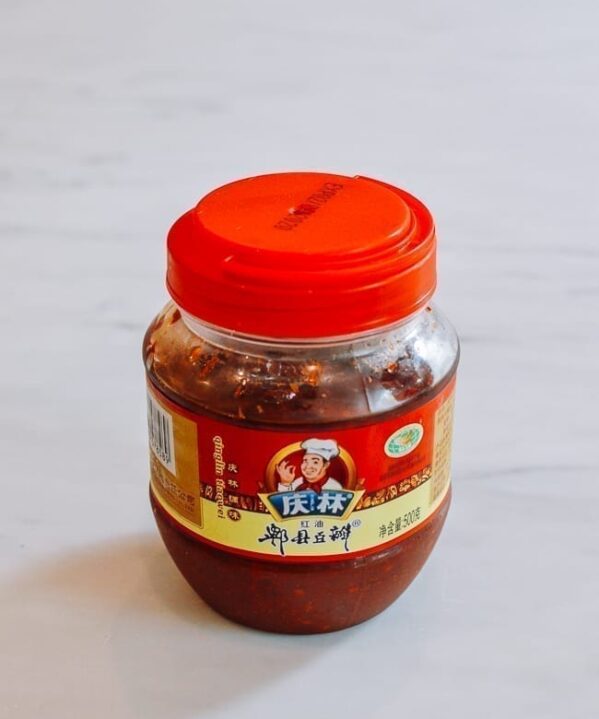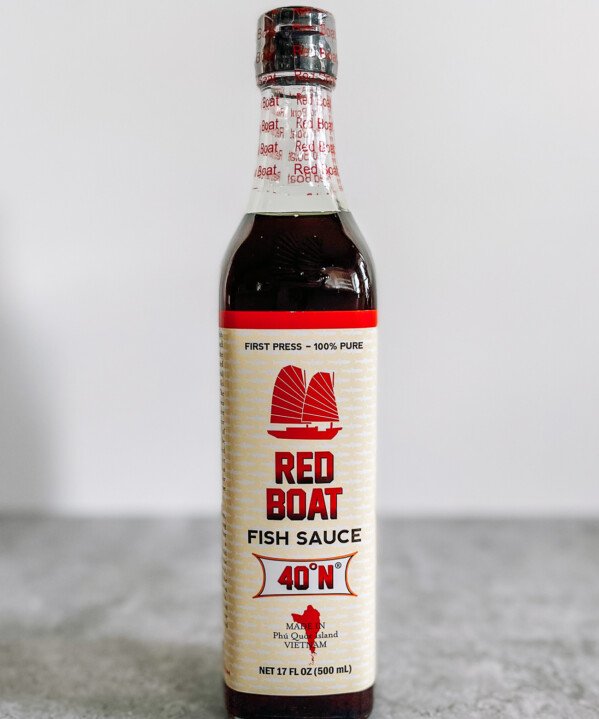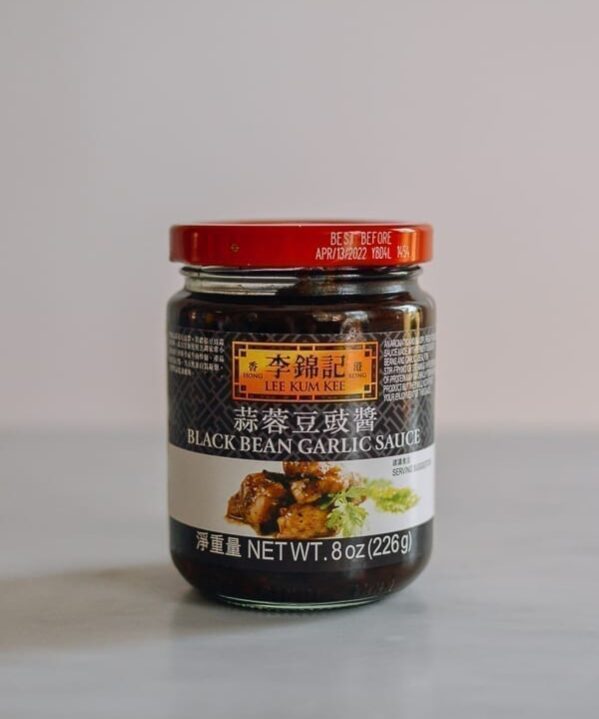My family is Cantonese, from Guangdong and Hong Kong, where fish dishes are steamed or fried and almost never spicy, like this Cantonese Steamed Fish. But with a more diverse mix of Chinese emigrating to the US, going out for Chinese food can be a new experience at each restaurant you try. We first tried this dish at a Sichuan place in NJ where they use a whole fresh croaker which by the way, is a surprisingly great tasting and economically priced fish.
We have since made it often at home using a fresh whole croaker and also with fillets. For convenience and easy preparation, I like to use tilapia or flounder fillets, which is what this recipe calls for.
This steamed spicy fish is a snap to make and really tasty. Just steam the fish filet, make the minced vegetable spicy bean sauce, pour it right over and there you have it! It’s really an authentic Dou Ban Yu recipe made with the fillet of your choice and really easy to prepare!
Even Sarah, who shies away from any and all seafood except for maybe sushi and the occasional cream cheese and lox bagel, enjoys this recipe. The recipe makes a healthy amount of sauce, which you’re definitely going to want with your rice.
Other fish recipes we have on the blog include the spicy Duo Jiao Yu which we make with tofu and if you like Shanghai style food, the Hong Shao Yu or braised red-cooked fish.
Steamed Fish with Spicy Bean Sauce: Recipe Instructions
Steam the fish, drain and put on plate. See this Cantonese Steamed Fish recipe for more details on how to cook your fish. You should also see our post on how to set up a steamer if you’re not familiar with steaming foods in Chinese cooking.
While the fish is steaming, prep the vegetables and have your pork (if using) ready for cooking. We decided to make a vegetarian version of the sauce.
Mix 1 tablespoon water and cornstarch into a slurry mixture and set aside. Measure out shaoxing wine, bean sauce, hoisin sauce, sesame oil, sugar, and white pepper in a small bowl and set aside.
Heat wok to high and add 1 tablespoon of oil, garlic and onion. Stir for a minute and quickly add the rest of the vegetables and pork. Stir-fry for another minute. Add your prepared sauce and stir.
Add your water and bring to a simmer.
Thicken the mixture with the cornstarch slurry until is coats a spoon. Add more water if it’s too thick or more slurry if it’s too thin. Stir in a teaspoon of oil to finish the sauce and pour the sauce over the steamed fish. Garnish with cilantro and scallion and serve immediately.
Questions? Comments? Let us know in the comment section below.
Fish with Spicy Bean Sauce (Douban Yu)

Ingredients
- 1 large fish filet (tilapia or flounder, about 1 pound/450g)
- ¼ cup shiitake mushrooms (finely chopped)
- ¼ cup carrot (finely chopped)
- ¼ cup red pepper (finely chopped)
- ¼ cup onion (finely chopped)
- ¼ cup ground pork (optional)
- 1 tablespoon water
- 1 tablespoon cornstarch
- 1 tablespoon shaoxing wine
- 1 tablespoon spicy bean sauce (doubanjiang)
- 1 teaspoon hoisin sauce
- 1/2 teaspoon sesame oil
- 1/2 teaspoon sugar
- 1/8 teaspoon Ground white pepper
- Oil
- 1 clove garlic (minced)
- 1/2 cup water
- 2 teaspoons cilantro (chopped)
- 1 tablespoon scallions (chopped)
Instructions
- Steam the fish, drain and put on plate. See this Cantonese Steamed Fish recipe for more details on how to cook your fish.
- While the fish is steaming, prep the vegetables and have your pork ready for cooking. Mix 1 tablespoon water and cornstarch into a slurry mixture and set aside. Measure out shaoxing wine, bean sauce, hoisin sauce, sesame oil, sugar, and white pepper in a small bowl and set aside.
- Heat wok to high and add 1 tablespoon of oil, garlic and onion. Stir for a minute and quickly add the rest of the vegetables and pork. Stir-fry for another minute. Add your prepared sauce and stir. Add your water and bring to a simmer.
- Thicken the mixture with the cornstarch slurry until is coats a spoon. Add more water if it's too thick or more slurry if it's too thin. Stir in a teaspoon of oil to finish the sauce and pour the sauce over the steamed fish. Garnish with cilantro and scallion and serve immediately.
